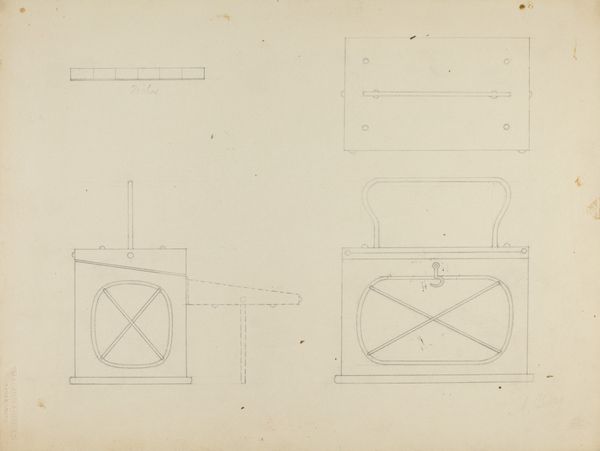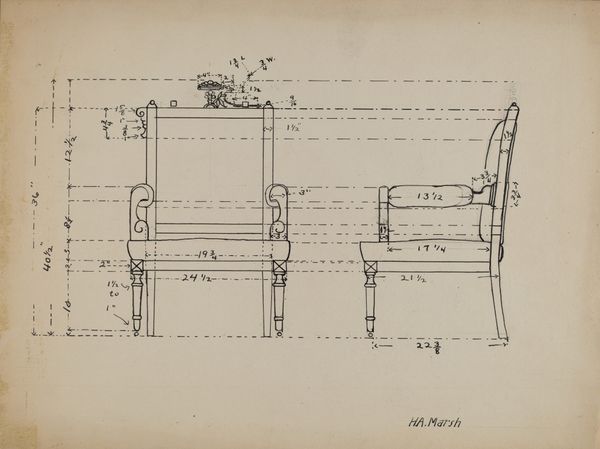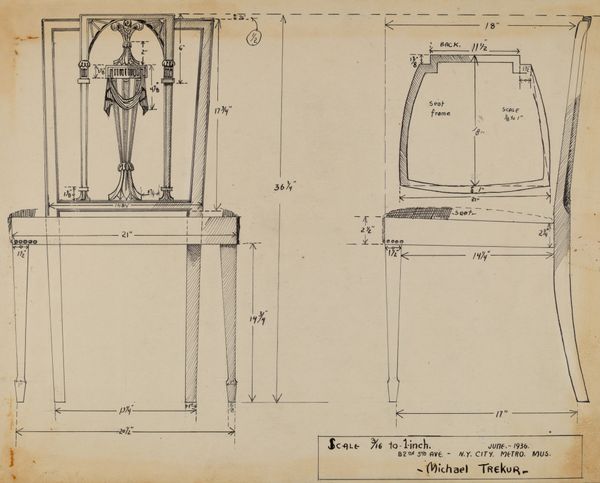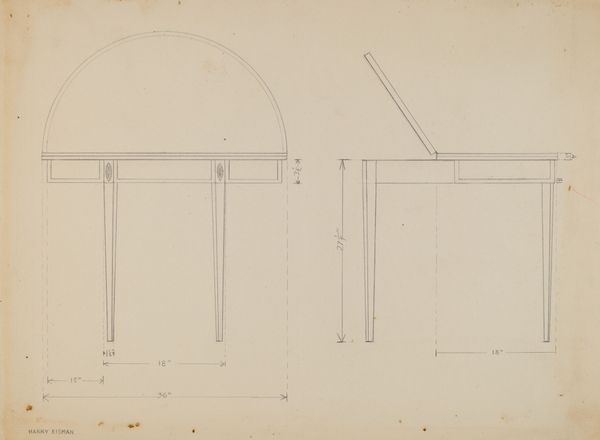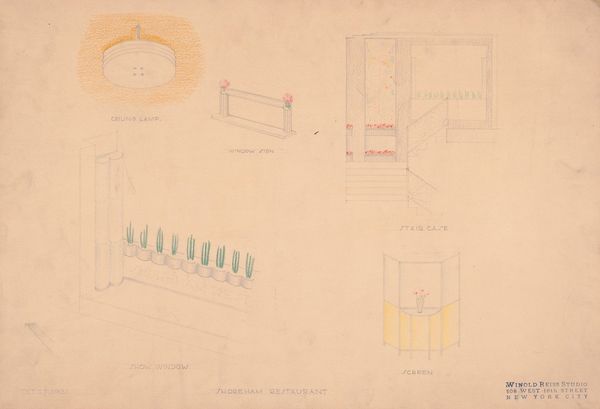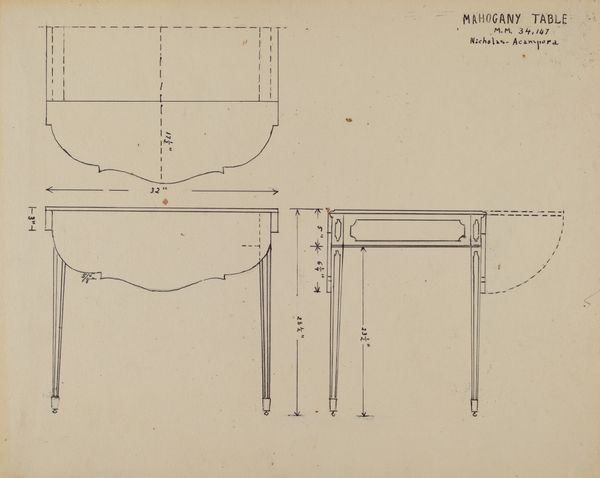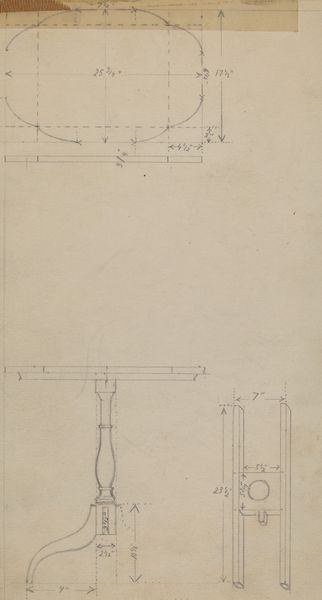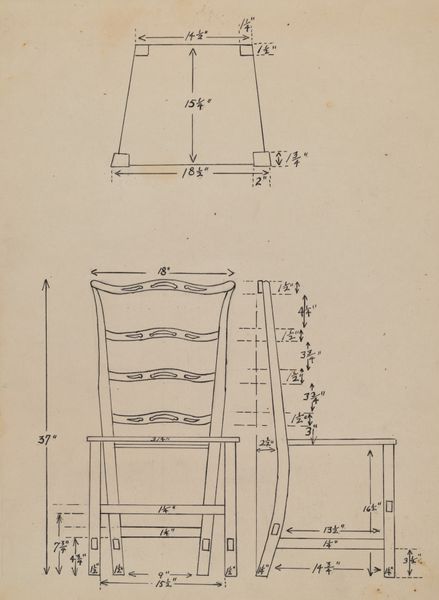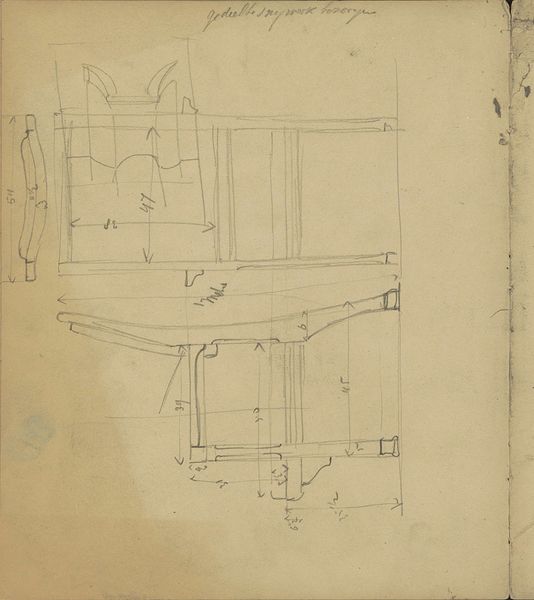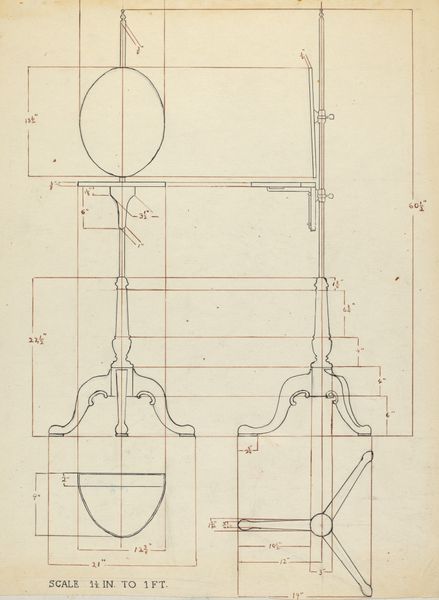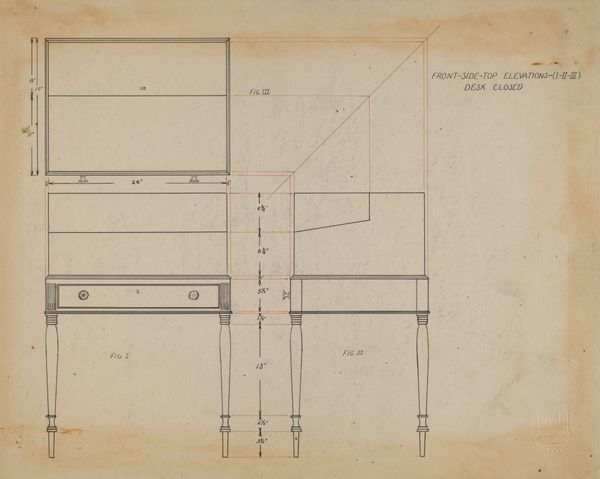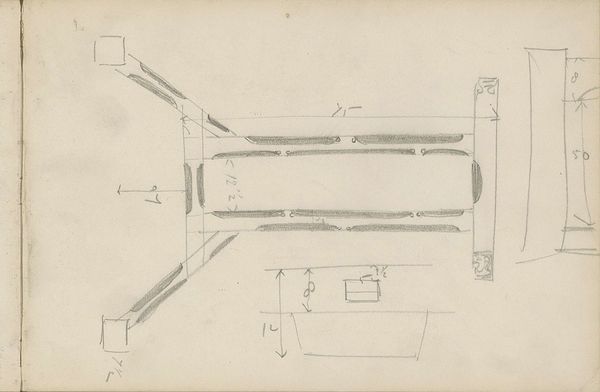
drawing
#
drawing
#
form
#
geometric
#
line
#
modernism
Dimensions: overall: 24.9 x 33.4 cm (9 13/16 x 13 1/8 in.) Original IAD Object: 10 1/4" wide; 6 1/4" deep' 4 3/4" high
Copyright: National Gallery of Art: CC0 1.0
Curator: The Frank Budash drawing, titled "Pa. German Box" from around 1939, looks to be a study of form using ink or graphite. I notice the technical line work used to delineate these geometric boxes. It almost feels like architectural plans, even though it is presented as an art piece. What's your first impression? Editor: It reminds me of shop drawings; a blueprint! I am really intrigued by what appears to be a focus on how this box might operate - its materials, method of construction, that sort of thing. How would you approach an interpretation of this piece? Curator: Let's focus on process here. How does the seemingly technical rendering style of the work play into its function as art? Note how line quality implies mass and volume and ask how the material fact of line on paper, and its illusionistic depiction of forms, serves to challenge distinctions between art and craft, high and low? Editor: So, it's less about what the drawing depicts and more about how that depiction comes to be. How it was physically made? Curator: Exactly! It is the how that dictates the what. Consider the context of 1939 – think about material constraints of the era or even the available materials to Budash. Consider further that the “subject” of this study, a Pa. German Box, hints toward this very conversation about function vs decoration! Is Budash concerned about its craft, its artistic depiction, its economic utility, or all of these? Editor: Interesting. It seems that a lot of art is about raising those types of questions and that these boxes may provide further insight on consumerism, design, production! Curator: Precisely! This piece asks us to investigate the materials, labor, and intent behind it all. And how it challenges these pre-conceived hierarchies! Editor: This new materialist lens has really highlighted a fresh way to interpret everyday objects like a Pa. German Box! I'll never see a blueprint the same way again. Curator: Indeed, I think that recognizing our engagement with ordinary things opens up avenues for new artistic dialogues, and I’ve equally taken away a greater understanding by having this discussion with you.
Comments
No comments
Be the first to comment and join the conversation on the ultimate creative platform.
